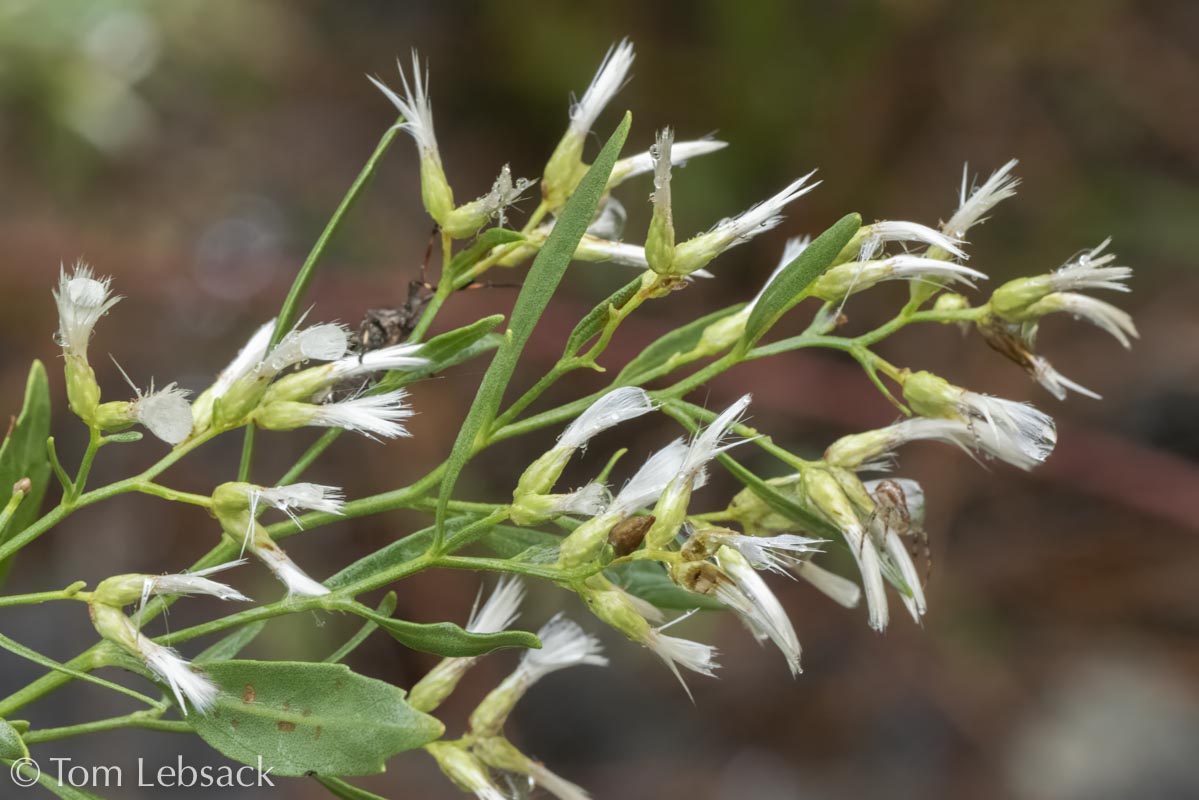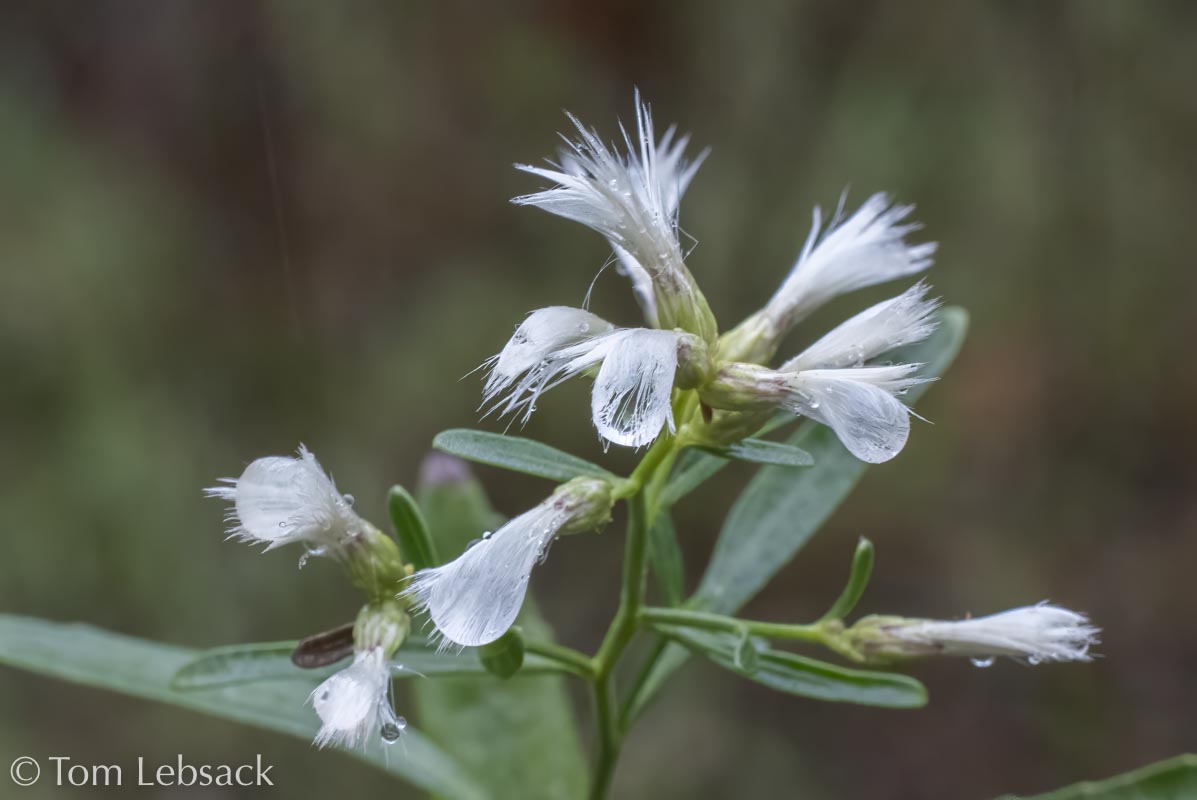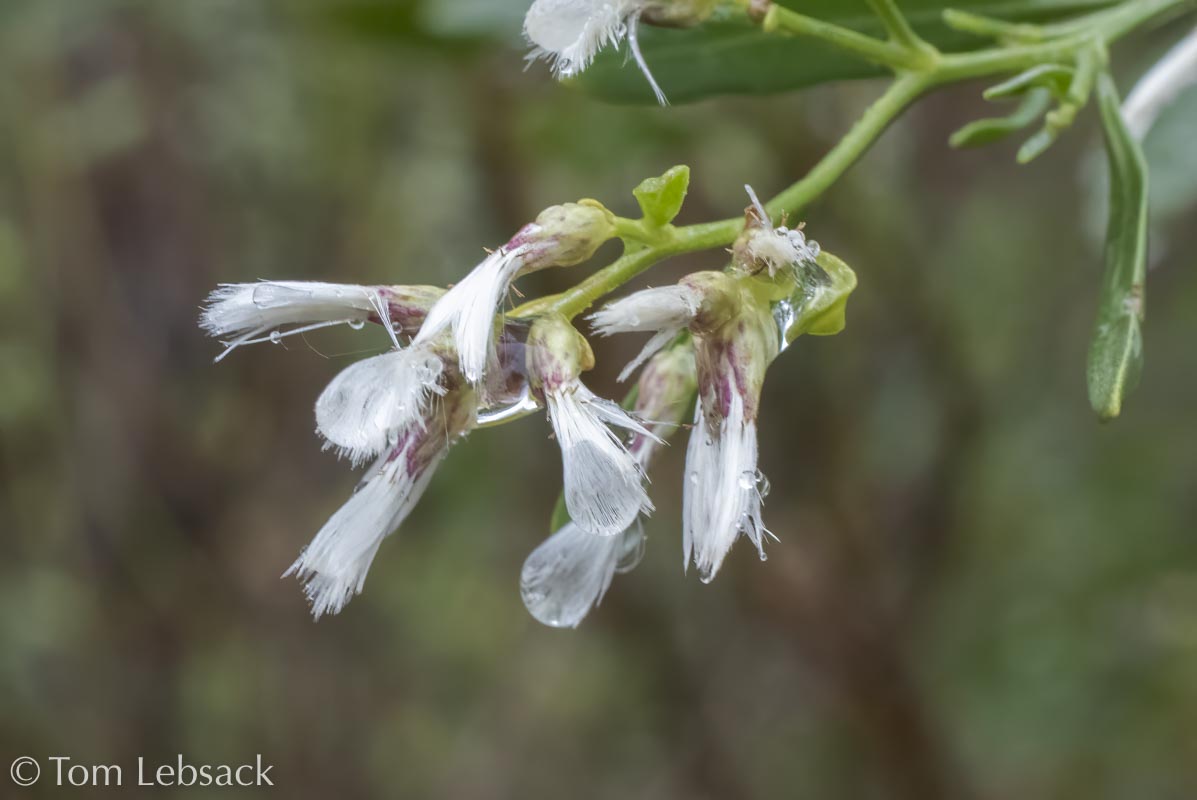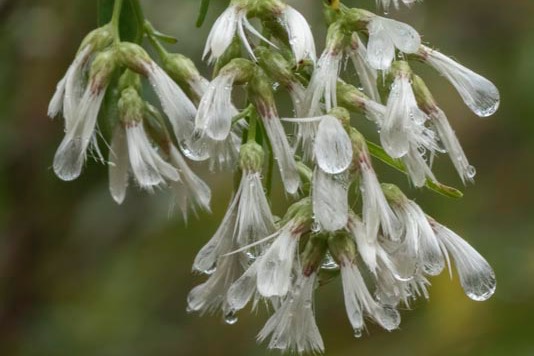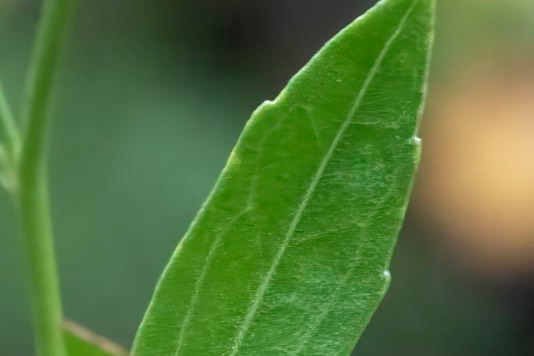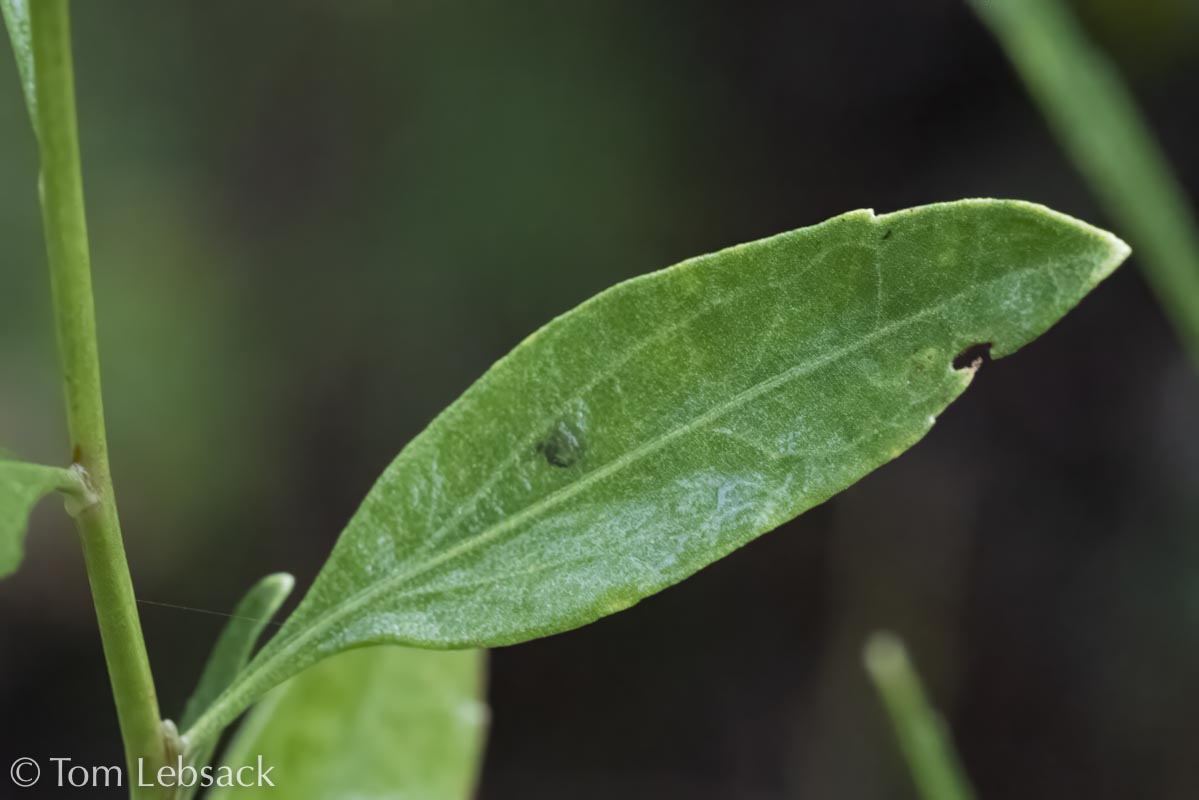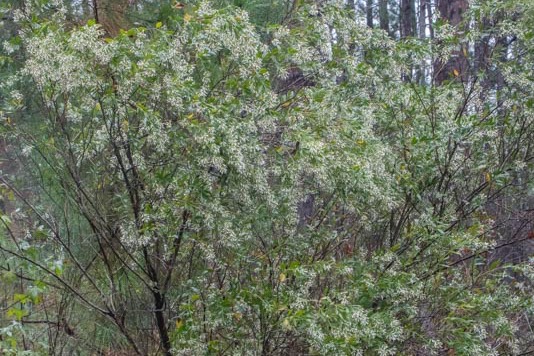Texas Wildbuds
Baccharis halimifolia
(Eastern Baccharis)
| Scientific Name | Baccharis halimifolia | USDA PLANTS Symbol | BAHA |
| Common Name | Eastern Baccharis, Groundseltree, Consumption-weed | ITIS Taxonomic Serial No. | 35682 |
| Family | Asteraceae (Sunflower) | SEINet Reference |
Click Here |
| Description | Habitat: Soils ranging from pure sand to pure clay and saline soils; open areas, wet fields, marshes, beaches, disturbed sites and roadsides; can be very invasive and difficult to eradicate. Plant: Fast-growing, medium to large, deciduous perennial shrub 3 to 10 feet tall, freely branched with slender, erect to ascending stems that are angled in cross-section and have longitudinal striations. Leaves: Alternate with elliptic to broadly obovate or rhombic blades, 1.2 to 2 inches long and 0.9 to 1.2 inches wide (relatively narrow leaves are especially common in Arkansas, Louisiana, and east Texas); on short petioles or sessile; edges near base are entire and usually coarsely serrate from the middle to tip with 1 to 3 pairs of teeth; surfaces are smooth and dotted with resinous glands. Inflorescence: Panicles of large numbers of small flower heads; pistillate (female) plants have white flowers, staminate (male) have yellow; pistillate flowers produce long, white pappus hairs which appear in the fall. Bloom Period: September to November. References: "Manual of the Vascular Plants of Texas" by Correll and Johnston, Flora of North America, Missouri Botanical Garden and Texas A&M University. |
BONAP Distribution Map Map Color Key Map Color Key |
Texas Status: Native |
Banner photo of Castilleja indivisa and Lupinus ssp. taken along FM 1323 north of Johnson City, Blanco County
© Tom Lebsack 2025
Every attempt is made to provide accurate, up-to-date, and relevant information, but the completeness or accuracy of any information presented on this website cannot be guaranteed. I use authoritative references to insure high standards of accuracy and review and update the information frequently.
